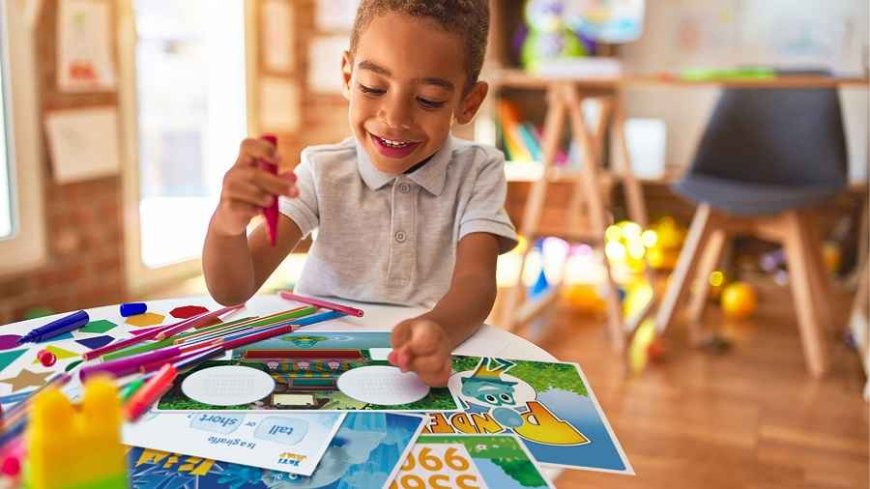Education Resources: Fostering Inclusivity and Global Understanding
This article delves into the realm of multilingual education resources, exploring their significance and impact on fostering inclusivity,

In a world that is becoming increasingly interconnected, multilingual education has emerged as a beacon of opportunity and progress. The ability to communicate and connect with individuals from diverse linguistic backgrounds is no longer a mere asset; it's a necessity. This article delves into the realm of multilingual education resources, exploring their significance and impact on fostering inclusivity, cultural awareness, and global understanding.
The Multilingual Education Landscape: A Glimpse into Diversity
Multilingual education is an approach that recognizes the value of teaching and learning in multiple languages. This approach extends beyond linguistic skills, encompassing a broader understanding of cultures, histories, and perspectives. With globalization shrinking the world, individuals equipped with multilingual abilities are better poised to engage with people from various backgrounds and contribute effectively to a global society.
Multilingual Education Resources: Empowering Learners
Bilingual Storybooks and Literature: Immersing students in literature that is available in multiple languages not only enhances their reading skills but also introduces them to the richness of different cultures. Bilingual storybooks can spark curiosity and encourage exploration of new languages.
Language Learning Apps and Platforms: Technology has revolutionized language learning. Interactive apps and online platforms provide learners with the flexibility to acquire new languages at their own pace. These resources often include lessons, quizzes, and interactive exercises that cater to various learning styles.
Cultural Exchange Programs: Multilingual education is about more than just language; it's about understanding the cultural contexts in which languages thrive. Cultural exchange programs enable students to interact with peers from different linguistic and cultural backgrounds, fostering empathy and open-mindedness.
Multilingual Libraries and Resources: Educational institutions and communities can establish libraries with a wide range of resources in different languages. This allows students to explore subjects beyond their native language and encourages a broader perspective.
Language Immersion Camps: Immersion is a potent technique for language acquisition. Language immersion camps provide an environment where learners are exposed to a target language consistently, enhancing their speaking and comprehension skills.
The Benefits of Multilingual Education Resources
The incorporation of multilingual education resources offers several advantages, which extend beyond language proficiency:
Cultural Sensitivity: Exposure to various languages fosters cultural sensitivity and a deeper appreciation for different ways of life. Students become more attuned to the nuances of communication and are better equipped to navigate cross-cultural interactions.
Enhanced Cognitive Skills: Learning multiple languages enhances cognitive functions such as problem-solving, memory retention, and multitasking. It exercises the brain in unique ways, contributing to intellectual growth.
Global Citizenship: Multilingual education nurtures global citizens who can engage with people from diverse backgrounds. This is essential in an interconnected world where collaboration across borders is increasingly common.
Expanded Career Opportunities: Proficiency in multiple languages is an asset in the job market. Many industries value employees who can communicate effectively with international clients and partners.
Improved Language Proficiency: Exposure to different languages not only facilitates learning those languages but also enhances overall language skills. Concepts learned in one language can be applied to others, accelerating language acquisition.
Challenges and Strategies in Implementing Multilingual Education
While the benefits are compelling, implementing multilingual education resources comes with its own set of challenges:
Resource Availability: Sourcing high-quality multilingual educational materials can be challenging. Institutions can collaborate with publishers and educators to develop culturally relevant resources.
Teacher Training: Educators may require training to effectively teach in multilingual environments. Professional development programs can equip teachers with strategies to cater to diverse language needs.
Language Equity: In multilingual settings, it's important to ensure that no language is given precedence over others. Institutions should promote equitable treatment of all languages represented.
Parent and Community Involvement: Parents and communities play a vital role in supporting multilingual education. Regular communication and engagement can help address concerns and promote understanding.
Multilingual education resources hold the key to a more inclusive and globally connected society. By embracing the richness of languages and cultures, educators empower students to become effective communicators, critical thinkers, and compassionate global citizens. As multilingual education takes center stage in the educational landscape, it paves the way for a future where language is not a barrier, but a bridge that connects individuals from all corners of the world.
